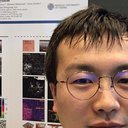[Investigation of skin prick test on 2707 patients with allergic rhinitis in Wuhan area].
Ключевые слова
абстрактный
OBJECTIVE
To investigate the distribution of common allergens in patients with allergic rhinitis (AR) from 2006 to 2010 in Wuhan area, and provide the objective evidence for the prevention and treatment of AR.
METHODS
The medical records of skin prick test (SPT) performed on 2707 AR patients from 2006 to 2010 were retrospectively analysed, and the positive rate of different allergens and changing trends in this time were compared. SPSS 17.0 software was used to analyse the data.
RESULTS
There were significant differences among the Dermatophagoides pteronyssinus positive rate (χ(2) = 12.11, P < 0.05) and Dermatophagoides farinae positive rate (χ(2) = 11.11, P < 0.05) in the past 5 years. Meanwhile, there was an upward trend in the positive rate of dust mite, which the positive rate of Dermatophagoides pteronyssinus increased from 84.5% in 2006 to 90.5% in 2010 (χ(2) = 6.88, P < 0.05), positive rate of Dermatophagoides farinae increased from 81.5% in 2006 to 89.0% in 2010 (χ(2) = 9.68, P < 0.05); There were significant differences among the Mugwort and Ragweed positive rate of 5 years (χ(2) = 194.10, P < 0.05; χ(2) = 67.06, P < 0.05). There were significant differences among the mold I and mold II positive rate of 5 years between (χ(2) = 18.95, P < 0.05; χ(2) = 36.62, P < 0.05). Meanwhile, there was an upward trend in the positive rate of mold and fluctuant trend in the positive rate of spring-pollen.
CONCLUSIONS
Nearly five years, dust mites is still the most common allergens in AR patients, presenting upward trend; the positive rate of mold presenting upward trend; the positive rate of wormwood and guinea wood presenting downward trend; the positive rate of pollen presenting fluctuant trend.



